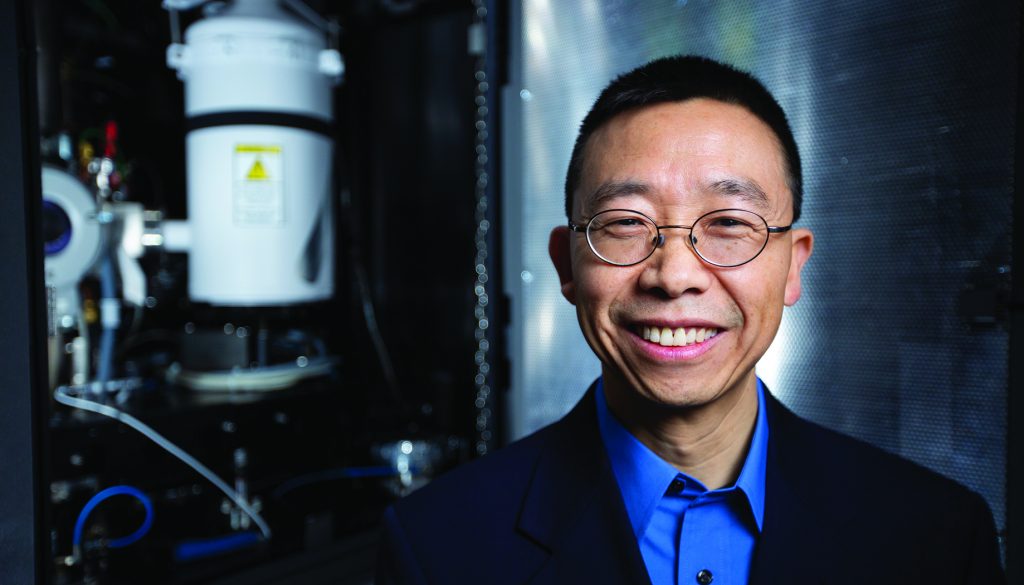Cleaner, Greener Technologies
Xiaoli Tan is creating new materials needed to solve international sustainability and environmental challenges. Tan, professor of materials science and engineering, is an expert in designing, creating and measuring new compositions of functional oxide ceramics, materials widely used in electronics.
“Our goal is to establish the interrelationships between materials’ composition, microstructure, and properties, so we know what ingredients will make oxide ceramics materials with much better performance than existing ones,” said Tan.
Optimizing the performance of dielectric oxide ceramics may advance improvements in the energy density of capacitors used to store solar and wind energy.
And the clock is ticking on finding new lead-free compositions of piezoelectric oxide ceramics to replace the lead-containing version widely used today in fields ranging from medical ultrasound to underwater communications.
“Piezoelectric materials convert mechanical energy into electrical energy or vice versa,” said Tan. “When you apply force or pressure, the crystal structure deforms and generates high voltage.”

Tan’s research group is the worldwide leader in a technique called in situ transmission electron microscopy (TEM) to examine just how crystal structures respond to changes in pressure and voltage. Developed by Tan during his Ph.D. work, the technique includes a custom specimen holder and a specialized specimen preparation process that creates the 0.1 micron-thick, crack-free specimen required for the TEM to “see” through the sample.
“The TEM is capable of recording images at resolutions smaller than 1 billionth of a meter, so we can see even the slightest changes in crystal structure,” said Tan. “The TEM at the U.S. Department of Energy’s Ames Laboratory Sensitive Instrument Facility is one of the best in the nation, which makes this research possible at Iowa State.”
Next for Tan is adding additional complexity to his technique, including the ability to control temperature during measurements. “Adding in the ability to heat up or cool down samples will better simulate the realistic application conditions of oxide ceramics, such as in the high temperatures faced by electric car capacitors,” said Tan. “More closely mimicking real-world conditions will help us use these materials to solve real-world problems.”